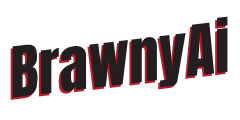BrawnyAi’s Transition from SDXL to Flux.DEV: A Creator’s Perspective

Moving Forward with AI Art (Free article for all MightyBrawnies)
Hey MightyBrawnies,
I wanted to share a quick update on my journey transitioning from SDXL to Flux.DEV and how it has reshaped my creative workflow for BrawnyAi.

Unlock full access to all our posts, high-resolution downloads, and even our secret BrwnyXXX Telegram community by becoming a 💪MightyPro. Your support keeps BrawnyAi independent and fuels more creative and innovative content.
📌 Join now & explore more: Read about 💪MightyPro membership here.
If you’ve been following my work, you know I don’t make transitions lightly. Shifting from SD 1.5 to SDXL was a brutal experience. I jumped in too early—no LoRAs, no well-trained checkpoints, and losing ControlNets was painful. It took 4-6 months to fine-tune my SDXL workflow to get the results I wanted. Unfortunately, that period coincided with lower reach and engagement across my accounts. But as AI creators, we have to evolve—pushing the limits of technology is part of the game.


This time, I waited 3+ months before fully committing to Flux.DEV. By mid-December, I was generating images exclusively in Flux, and while the transition was rough, this time I was prepared.

SDXL (Stable Diffusion XL) – An advanced version of Stable Diffusion, an open-source AI model that generates images from text prompts. It improves on SD 1.5 by handling complex compositions and details better.
Flux.DEV (Flux) – A newer open-source AI model often described as a “Midjourney killer.” It generates highly detailed, realistic images with improved understanding of prompts, but requires more computing power.
ControlNets – A tool for guiding AI-generated images using specific outlines, poses, depth maps, or even sketches. This is useful when you need consistent poses or layouts across different images.
LoRAs (Low-Rank Adaptation models) – Small AI add-ons that fine-tune an image model to specialized styles, themes, or characters without needing to retrain the entire AI model.
Checkpoints – Pre-trained versions of AI models with different styles, trained on specific datasets to generate unique-looking images.
Inpainting – A technique to edit parts of an AI-generated image, allowing you to fix details or change elements while keeping the rest of the image intact.
ComfyUI – A popular visual workflow interface that lets creators build and modify AI-generated images using nodes instead of code.
Meta/Master Prompt – A structured prompt format designed to standardize image generation, allowing for quick variations across multiple themes or characters.
Prompt Engineering – The process of carefully designing prompts to influence AI output and get the best possible image results.
Why Move to Flux.DEV?
SDXL is still an amazing tool, and my last SDXL workflow was highly optimized:
• I used Virile Horizon Turbo with my trained LoRAs, generating images in under 11 seconds.
• I had a modular master prompt that let me swap themes and maintain BrawnyAi’s unique style.

So, why give that up?
Because Flux is a game-changer. I thought the “MidJourney killer” claims were exaggerated—until I tested it. Flux understands prompts at a level no open-source model has before. It replicates nuances, details, and compositions far more accurately than SDXL.

The trade-off? More computing power—generating an image now takes about 1 minute instead of 11 seconds. But it’s worth it. The realism, texture, and detail—when prompted correctly—are unmatched.
How I Transitioned to Flux
To adapt BrawnyAi’s work to Flux, I followed a structured approach:





